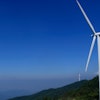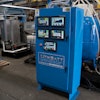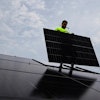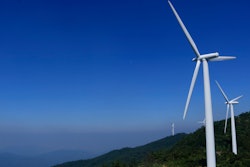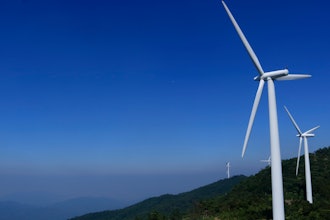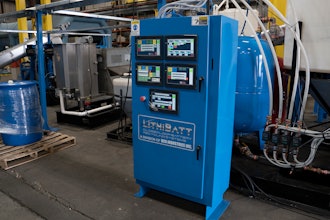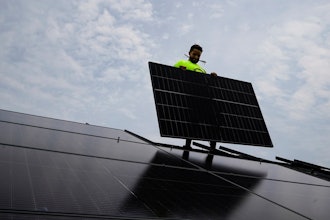The first major parts have begun arriving in eastern Georgia for what could become the country's first nuclear reactor in a generation, although uncertainty remains over when safety regulators might grant it final approval.
Flatbed trucks started delivering metal plates Tuesday to Plant Vogtle, where they will eventually be welded together to form two cylinders more than 200 feet tall. Each cylinder would contain a nuclear reactor. They are designed to keep radiation from escaping from the plant in case of an accident.
"This is a significant milestone for Vogtle, with this being the first major nuclear component to arrive at our site, and it arrived on schedule," said David Jones, a vice president for the Atlanta-based Southern Co.'s nuclear subsidiary.
The plates are manufactured in Japan, shipped to the Port of Savannah and will be delivered by a fleet of nearly 50 trucks. While workers can weld the plates together, they cannot set the 2,300-ton containment cylinders into position until the new plant wins final approval from the Nuclear Regulatory Commission, which oversees safety in the civilian nuclear industry.
Southern Co. subsidiary Georgia Power and its partners say they want to build the $14 billion nuclear plant to meet future electricity needs in the state. They aim to have the first reactor operating in 2016. The second would come online a year later.
Before the plant can be approved, the NRC must first accept the design for the Westinghouse Electric Co.'s AP1000 reactor, which would power the expansion at Plant Vogtle and others under consideration across the country. As part of the process, regulators are trying to decide whether a concrete-and-steel shield building protecting the reactor can withstand earthquakes or hurricane and tornado winds.
Earlier this month, a regulator called into question the NRC's goal of making a final decision on the AP1000 reactor by the end of September 2011.
Westinghouse could not provide all the information the NRC staff wanted on the new reactor design by a July 30 deadline, said David Matthews, director of the NRC's division of new reactor licensing, in a letter. Matthews said it will not be clear until later this month whether regulators will miss their initial deadline for a final decision.
Until the reactor is approved, the NRC cannot give approval to the Plant Vogtle expansion. Jones told reporters that he does not anticipate any major problems.
"It is a tight schedule, but, to date, there doesn't appear to be any significant delays relevant to any information ... the NRC will need to make its final decision," he said.
Delays were a big problem during the last round of nuclear building. For example, construction started on the two existing reactors at Plant Vogtle in 1974, but they were not operating until a decade later because of a poor economy and redesigns required after a 1979 accident at a nuclear reactor in Pennsylvania.
When construction lags, costs escalate for plant owners.
President Barack Obama's administration has offered $8 billion in loan guarantees to fund the expansion at Plant Vogtle. The financial risks still make Wall Street squeamish. Moody's Investors Service downgraded Southern Co.'s credit rating last month, partly because of the risks of building new coal and nuclear power plants.
